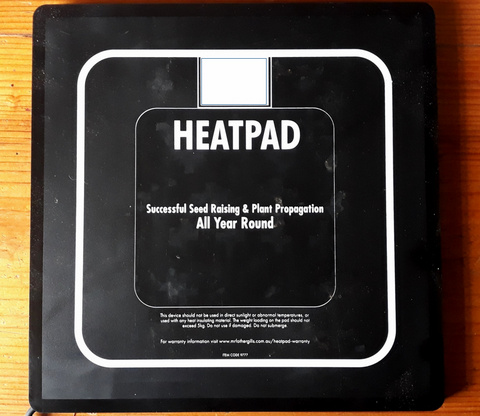
Over the years I have liked to be able to get some warm weather seedlings such as tomatoes (particularly), cucumber, zucchini, capsicum and on the odd occasion chillies, up and going early. We have a greenhouse, which makes things easier, but we still get to zero Celsius or a bit below and there is no artificial heating in the greenhouse. Considering these factors, even though I like to sow them early, they rarely come up.
While I was aware of heating pads to assist such endeavours, my original thoughts were that I would have to provide 240v power to the greenhouse to operate said heating pad. This, of course, was incorrect. The use of the heating pad is purely for the purposes of getting seeds to germinate, and the veggies I wished to germinate do not need light. Once they are germinated the seeds can be relocated to said greenhouse, and they will thrive.
So I decided that I needed to get myself a heating pad!
I think that it is worth noting that if you germinate your seeds inside your house, they do not require a lot of extra heat, (tomatoes need to be somewhere between 20⁰C to 30⁰C depending on who you read). We don’t heat the house overnight and it can get chilly here, down to 15C or less inside.
There are various levels of complexity, some with variable thermostats, some without and of varying sizes and shapes. It also appears better to use a heating pad that is designed for use with seedlings rather than for other purposes such as keeping pet reptiles warm or brewing beer in colder areas.
The one I got was a ‘plug in and run’ with no controls or lights of any description, but it was available immediately from the hardware store and seems to do the job. It also uses a ridiculously small amount of energy at 10 watts so that even if you are totally off grid it would not be an unacceptable overnight power drain.
The instructions stated that it heated the seedlings up to 10⁰C above ambient temperature. If you were doing this outside in winter (at least around here) that would not be enough, but inside it worked fine. The instructions also make the point that the heat pad should not be located near a heat source such as an appliance or in full sun because this may cause overheating of the seeds. Also, getting it wet should be avoided because it is electrical equipment.
How I set it up and results
Obviously it needs a source of 240vAC electricity to run it, so I set mine up on our dining room table next to our table top oven. Yup! I did make sure it was few centimetres away and on the rare occasion the oven was in use it did not add anything to the temperature of the seedlings. In this position it was also near a western window where the punnets got some indirect light, but were protected from direct sunlight by an awning. This meant It was also in an area where I could keep an eye on the whole set up.
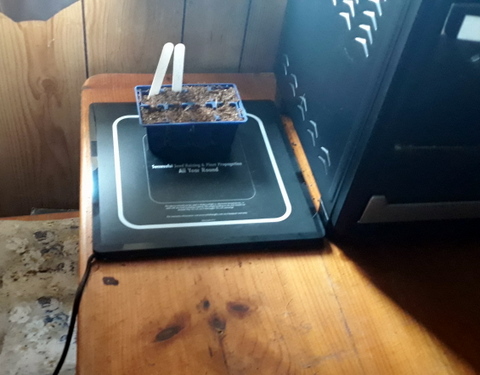
Once set up and running I put together some 8 celled punnets with tomato, cucumber, zucchini and capsicum. I did some monitoring of the temperature and, for example, with an ambient air temperature inside the house of 18⁰C the mat temperature was 28⁰C and this translated to a temperature at the top of the punnet of 22⁰C. Over a couple of days the punnets dried out somewhat so I placed them in a tray of warm water in the greenhouse for 20 minutes during the day to rehydrate. I then gently shook out any excess water and placed them back on the heating pad once they were rehydrated.
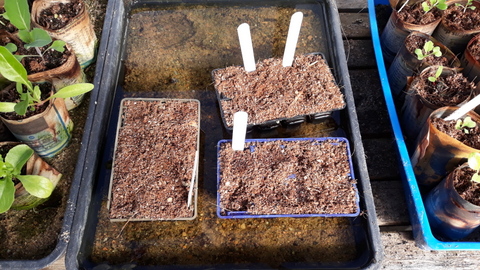
The result was that after 4 to 5 days the cucumbers started to come up, followed by the zucchini a couple of days later, with the tomatoes coming a few days after that. The capsicums never did eventuate but I think that that was due to the seed being a bit old rather than a problem with the system.
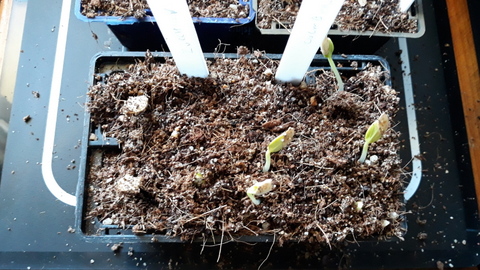
I am very happy with the way things worked out and am a little chagrined that I did not apply this approach sooner. However, I am now tooled up with an understanding of the process and will be starting my spring crops earlier than I can with just the greenhouse.
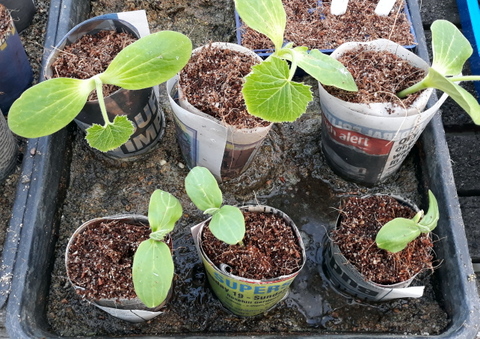
Growing well!



